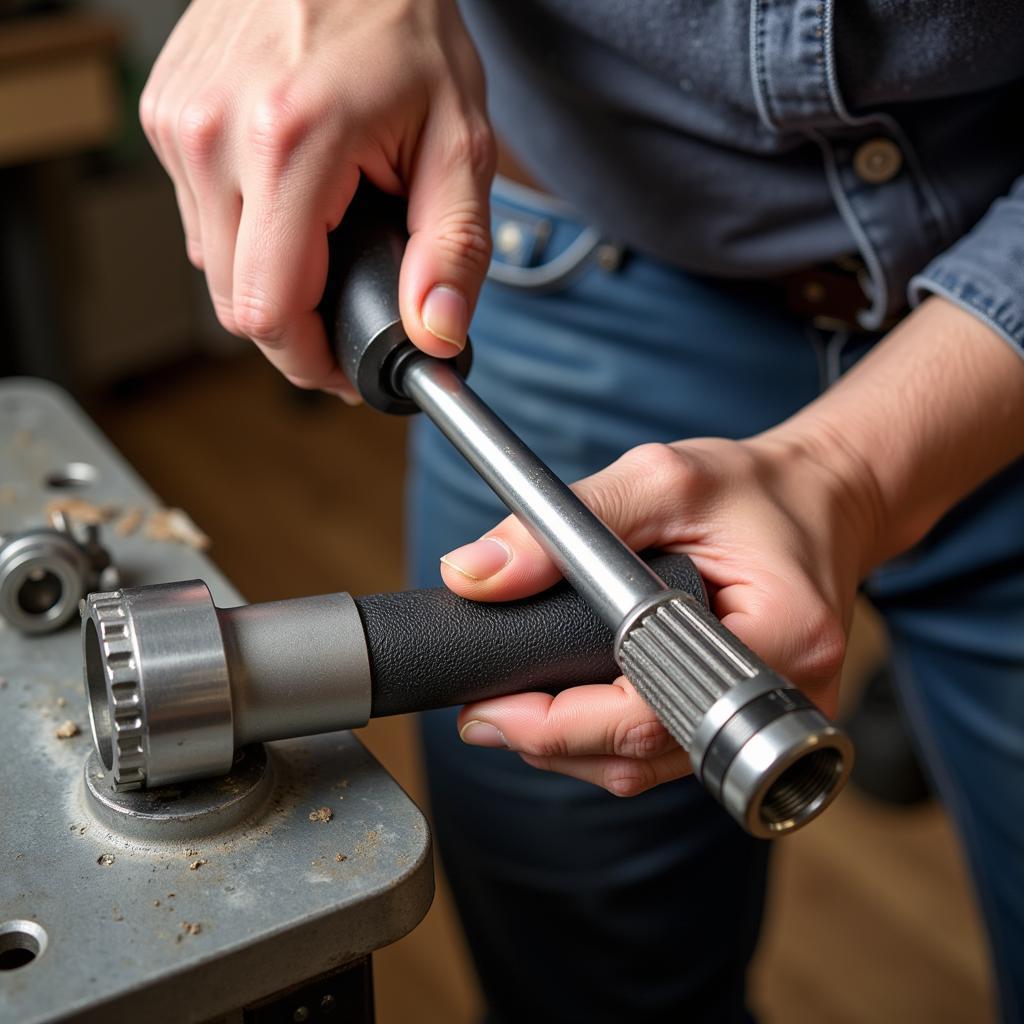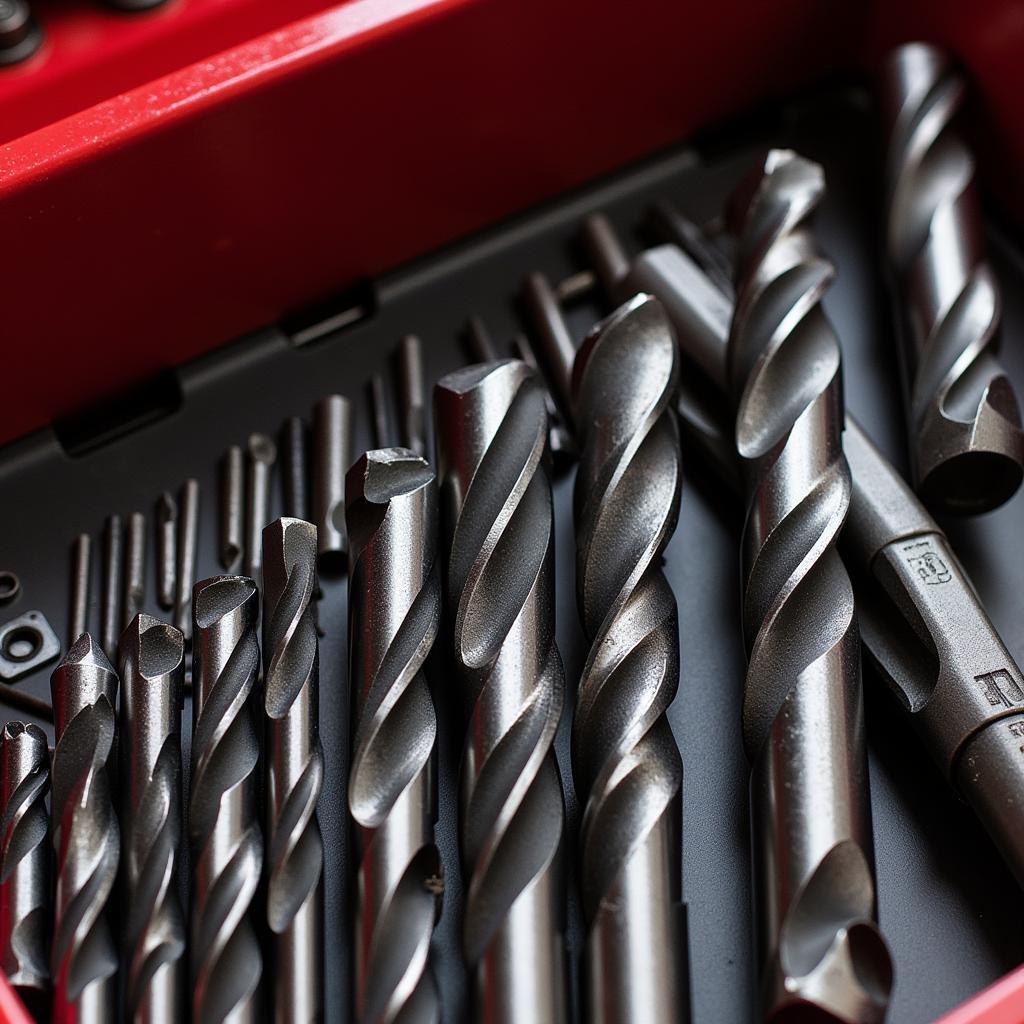A ratchet tap wrench is a valuable tool for anyone working on car repairs, especially those who need to create new threads in a part. This wrench combines the functionality of a tap wrench and a ratchet, simplifying the process of threading. However, it’s essential to understand how to use this tool effectively and safely.
What is a Ratchet Tap Wrench?
A ratchet tap wrench is a specialized tool designed for creating or repairing threads in various materials, including metal, plastic, and even wood. It consists of a handle with a built-in ratchet mechanism and a socket that holds the tap. The ratchet allows for smooth and controlled rotation in both clockwise and counterclockwise directions, making it easier to work with the tap.
Advantages of Using a Ratchet Tap Wrench
There are several advantages to using a ratchet tap wrench over a traditional tap wrench:
- Improved Efficiency: The ratchet mechanism significantly reduces the time and effort required to create or repair threads.
- Easier Control: The ratchet provides more control over the tap, preventing it from slipping or binding.
- Increased Safety: The smooth operation of the ratchet minimizes the risk of hand strain or injury.
- Versatility: Ratchet tap wrenches are available in various sizes to accommodate different tap sizes and materials.
How to Use a Ratchet Tap Wrench
Here’s a step-by-step guide on how to use a ratchet tap wrench:
- Choose the Right Tap: Select a tap that matches the size and thread type required for your project.
- Insert the Tap: Insert the tap into the socket of the ratchet tap wrench.
- Secure the Tap: Tighten the wrench to hold the tap securely in place.
- Start Threading: Begin threading by turning the ratchet in the clockwise direction. Apply moderate pressure while threading.
- Reverse Rotation: Once the tap is fully inserted, reverse the ratchet to break the tap free.
- Repeat Process: Repeat steps 4 and 5 until you achieve the desired thread depth.
Safety Tips
- Use Protective Gear: Always wear eye protection, gloves, and a dust mask while using a ratchet tap wrench.
- Apply Moderate Pressure: Avoid excessive force when threading, as this can damage the tap or workpiece.
- Lubricate the Tap: Use cutting oil or tapping fluid to lubricate the tap and reduce friction.
- Avoid Over-Threading: Stop threading when the tap reaches the desired depth to prevent thread damage.
- Inspect the Tap: Regularly inspect the tap for wear or damage and replace it if necessary.
 Using Ratchet Tap Wrench
Using Ratchet Tap Wrench
Common Mistakes to Avoid
- Incorrect Tap Size: Using the wrong tap size can lead to thread damage or a poor fit.
- Over-Tightening: Tightening the tap too forcefully can damage the threads or break the tap.
- Improper Lubrication: Insufficient lubrication can cause the tap to bind or overheat.
- Using a Dull Tap: A dull tap can create uneven threads and make it difficult to thread.
- Ignoring Safety Precautions: Failing to wear protective gear or neglecting proper safety practices can result in injury.
Troubleshooting Tips
- If the Tap Binds: Lubricate the tap and try again. If the tap still binds, try using a different tap.
- If the Threads are Uneven: Make sure the tap is sharp and lubricated. Check your technique and ensure you are applying consistent pressure.
- If the Tap Breaks: Use a tap extractor to remove the broken tap. Be careful not to damage the workpiece further.
 Tap and Die Set
Tap and Die Set
Conclusion
Using a ratchet tap wrench can significantly simplify the process of creating or repairing threads in your car repairs. Understanding how to use this tool properly and following safety precautions can ensure a successful and enjoyable experience.
For any further assistance or inquiries, feel free to contact AutoTipPro at +1 (641) 206-8880 or visit our office at 500 N St Mary’s St, San Antonio, TX 78205, United States.
FAQ
Q: Can I use a ratchet tap wrench on different materials?
A: Yes, ratchet tap wrenches are designed to work on various materials, including metal, plastic, and wood.
Q: How do I know which tap size I need?
A: You can determine the tap size by measuring the existing threads or referring to a repair manual.
Q: How do I clean a ratchet tap wrench?
A: Use a brush and solvent to clean the wrench after each use. Wipe it down with a dry cloth before storing it.
Q: How often should I replace my ratchet tap wrench?
A: The lifespan of a ratchet tap wrench depends on its usage and quality. Replace it when you notice any signs of wear or damage.
Q: Where can I find a ratchet tap wrench?
A: Ratchet tap wrenches are readily available at most automotive supply stores, online retailers, and hardware stores.




Leave a Reply